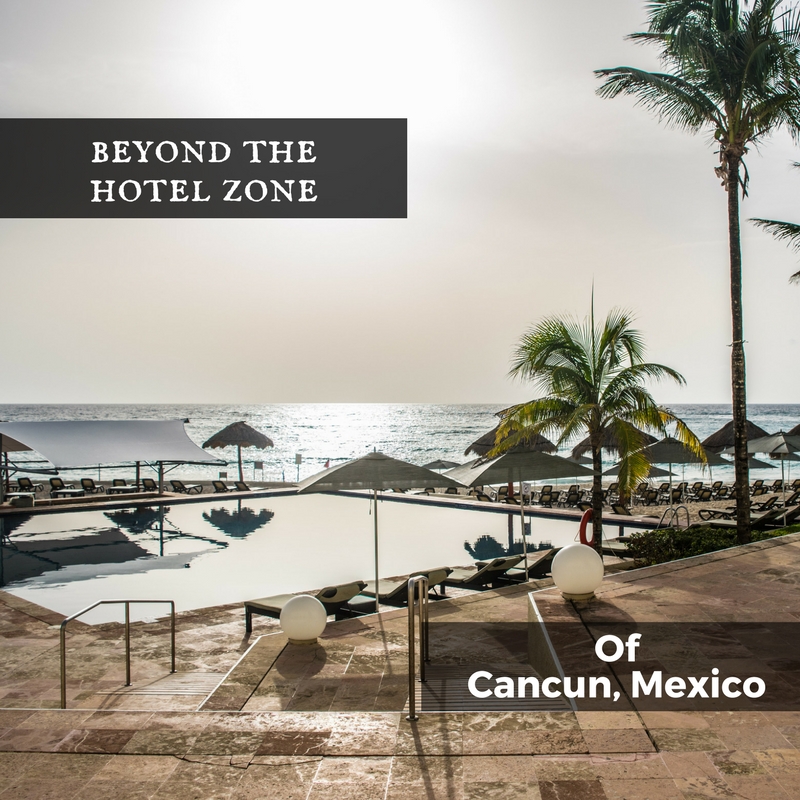
Cancun, Mexico. To the vast majority of U.S. travelers, it is a tropical paradise more well-known than Cabo or Mazatlan or even Puerto Vallerta. Movie stars, Spring Break parties, MTV’s Real World, close proximity to Tulum, the surrounding Maya ruins, beach clubs, turquoise waters and white sandy beaches stretching as far as the eye can see coupled with more 5-star resorts than Las Vegas, Nevada make this one of the ultimate all-inclusive beach destinations on the planet. And Mexico promotes it as such, with the vast majority of its tourist income coming from this singular city.
What most tourists don’t know is that Cancun is a city not even 50 years old, and is much, much more than simply the stretch of sand that makes up the Hotel Zone where the resorts are located. There is a living, breathing city beyond the walls of the all-you-can-eat-and-drink buffets, an intoxicating blend of Mayan and Mexican and Yucatan traditions and foods and people that create the bohemian atmosphere which first drew me in and turned my initial three-month stay into what is now rapidly approaching the two year mark (September).
The Hotel Zone has a good and bad side. To the vast majority of Americans coming in from the U.S. it is a stuff-your-face-and-drink-till-you-pass-out paradise of all-inclusive resorts along with Spring Break parties and plenty of sex, drugs and fun in the sun. On the flip side of that, for the vast majority of Mexicans living in Cancun it is where the best jobs can be found (if your English is at least at a basic 80% fluency)…but it is also where all the grossly overweight, consumption-addicted tourists lounge around poolside demanding their menus in English, their room-service in English, their taxis in English and their vacation in English, all while sucking on the teat of Western media that has them believing that anything beyond the walls of their resort is a dangerous world of cartels and thugs who are just waiting to rob, kidnap, rape and molest Americans.
Mexico is, after all, according to Western media, one of the most dangerous countries in the world.
Except we don’t have mass shootings at schools. People don’t bomb marathons here. We don’t have terrorist attacks. There’s no one getting shot up in movie theaters by psychos with fully-automatic weapons. The violence that exists in Mexico is in small pockets of the country that are easy to avoid, and if you aren’t doing drugs or related to narcos, you’ll generally be fine.
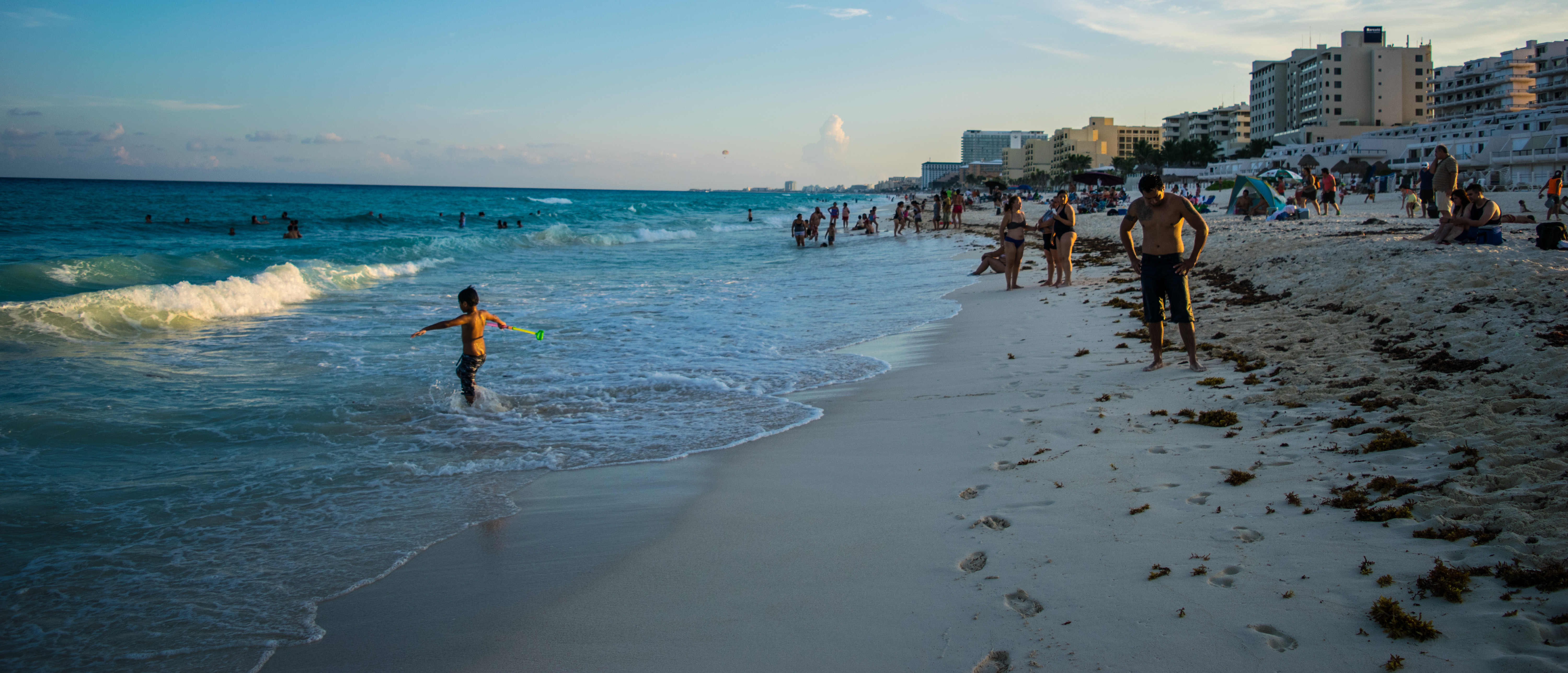
“If you reject the food, ignore the customs, fear the religion and avoid the people, you might better stay home.” – James A Michener
It is for that reason that most of the Mexicans who live here do not actually go to the Hotel Zone for anything other than work and the occasional party. When they want to go to the beach, they opt for places like Playa las Perlas or Playa Langosta or Playa de Nino; the Mexican beaches that aren’t filled with hordes tourists completely ignoring Mexican culture and acting as though they are still back in the United States.
It is an unfortunate reality that has been bred by years of Mexicans being the lower-working-class of the United States; most Americans view Mexicans as nothing more than yard workers, landscapers, brick layers, masons, trash men, farm workers, janitors, maids and second-class people. The sad reality of many tourists is they come here with an entitled attitude about how they are superior to the brown-skinned servants of the United States.
Many won’t say it to your face, especially considering they need your tips to make more than the minimum wage in Mexico, but if you come to Cancun with the typical superior attitude that most Americans have, a lack of Spanish and no desire to actually interact with the people or experience the true culture of Mexico and the Cancun beyond the Hotel Zone and respect the people on equal terms, you’ll find yourself on the receiving end of the painted face that is the Hotel Zone promoted in the tour guides and pamphlets…and consequently you’ll be missing out on the real Cancun which exists beyond the all-inclusive resorts. As well as the rest of the entire Riviera Maya, where there is a shitload of adventures to be had and places to explore, from cenotes to animal sanctuaries to beaches and snorkeling and ziplining through the jungle and Maya ruins and….
And if you act like a tourst, you’ll get nailed with the gringo tax for just about everything while you are in town, which means you’ll be paying more than we pay by anywhere from 30% to 60%.
But if you speak Spanish and go beyond the pristinely-manicured golf courses and man-made beaches of the Hotel Zone, respect the culture and actually make an attempt to immerse yourself in the real Cancun, you will uncover a bohemian city that is much more than simply beaches and resorts and bloated tourists and week-long parties on the beach. There is a living, breathing culture that makes up what Cancun actually is, and it is a place full of the warmth and passion of the Latin people that most tourists never take the time to experience.
Cris has two rooms available for rent in Cancun for those of you in the market for something quick and easy. If you want to rough it on your own, head on over to our Cancun travel page for more boots-on-the-ground information, or pick up our best-selling Cancun travel guide (on sale since 2011!) to truly go “local”.
The first, and major, difference between the Hotel Zone and the rest of Cancun is the cost of living. Whereas a two-bedroom place will cost you on average 1,500 to 2,000 USD a month to rent in the Hotel Zone, the moment you cross the bridge and get into Centro and the residential areas west of the downtown area the rent dramatically drops. The average cost of a two-bedroom condo or apartment near Plaza Las Americas, for example, is around 1,000 USD, and the further west you go the lower the prices drop. I have a good friend of mine who rents a very nice two-bedroom apartment in Centro just three avenues west of Plaza Las Americas and her rent is 8,000 pesos per month; at today’s exchange rate (May 24th, 2017) that’s about $425 USD.
Now, granted, Cris and I aren’t directly on the beach, but we can get to any beach we want to visit within 30 minutes on a bus…and for us, the fact that we’re saving around 1,500 USD a month above what we would be paying in the Hotel Zone is worth the 30 minute bus ride, or the “hassle” of getting on a bus and using public transportation. If we go further west into the older residential areas, you can find two and three-bedroom houses and apartments renting for as little as 4,000 pesos a month, though then you end up being 45 minutes to an hour from the beach, and at least 30 minutes from downtown.
The second difference between the Hotel Zone and the rest of Cancun is the fact that most of the people living in Centro and beyond might speak basic English…but almost everything outside of the resort district caters to the Spanish-speaking residents, with the exception of the main avenues of Yaxchilan, Tulum and Bonampak. These are the three eastern-most avenues running north and south along the mainland just west of the bridges that connect to the Hotel Zone. There are a lot of restaurants and plazas that cater to the more adventurous tourists, and you can still find menus in English and English-speaking staff. But once you go west beyond Yaxchilan you enter the Spanish-only barrios.
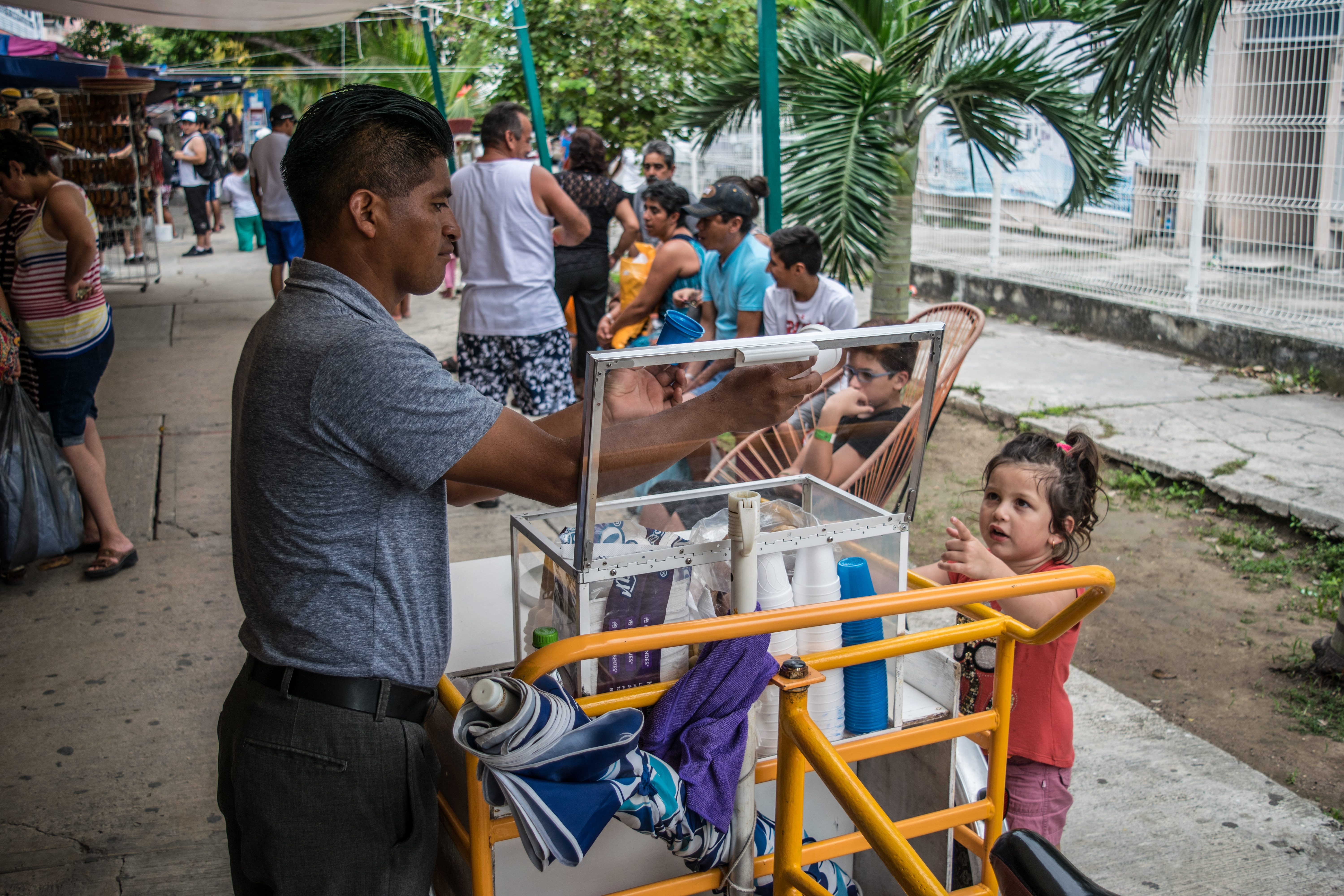
Our apartment, for example, is in a residential block of middle-class, Generation X families with kids that are our age and younger (we’re in our mid-30s as of this writing), over near Home Depot, with multiple parks, a dozen great restaurants within 10 minutes’ walking distance, two supermarkets within the same distance, and direct bus lines to the beaches of the Cancun.
Another benefit is the discounts. Discounts are a way of life for the Mexican people, and if you don’t communicate in Spanish, ask for them, or know about them, you will always get nailed with the gringo tax…which is basically the tax for you being an ignorant, white, entitled American who comes here with your dollars and your superior attitude and your absolute lack of a desire to see or experience anything beyond the English-speaking resorts and zero respect for the local people or culture. Most of the restaurants outside of Centro and the Hotel Zone, for example, have a specific discount night when you can get food for 30 to 50 percent off. Move theaters often run 2×1 days on tickets.
Where it costs a tourist 600 pesos for a dinner at many of the restaurants in the Hotel Zone (about 28-30 USD as of this writing), assuming you aren’t eating at one of the all-inclusive restaurants within the resorts, the moment you hit the mainland prices halve or more.
A really good example is La Parilla, which is even on the expensive side for downtown. Cris and I can go, have drinks, a huge meal, have leftovers to bring home, and we’ll pay between 600 and 700 pesos including a tip. Or we can head to places like Assaggiare, the best pizza & pasta place in town, where Cris and I can have a couple glasses of wine, a huge bowl of pasta or a damn good pizza, and 300 pesos including a tip. That’s 15-16 USD for two people. Or we can hit up Tacos Rigo and have beers + tacos and walk away without even hitting 200 pesos.
We’re a bit into the food thing, by the way. And the best restaurants in Cancun are on the mainland, not out in the Hotel Zone where it’s mostly buffets. If you’re a foodie, check out our Foodie’s Guide to Cancun; it’s got a boatload of videos from our favorite places to eat and a huge list so you can eat your way around town just like a local.
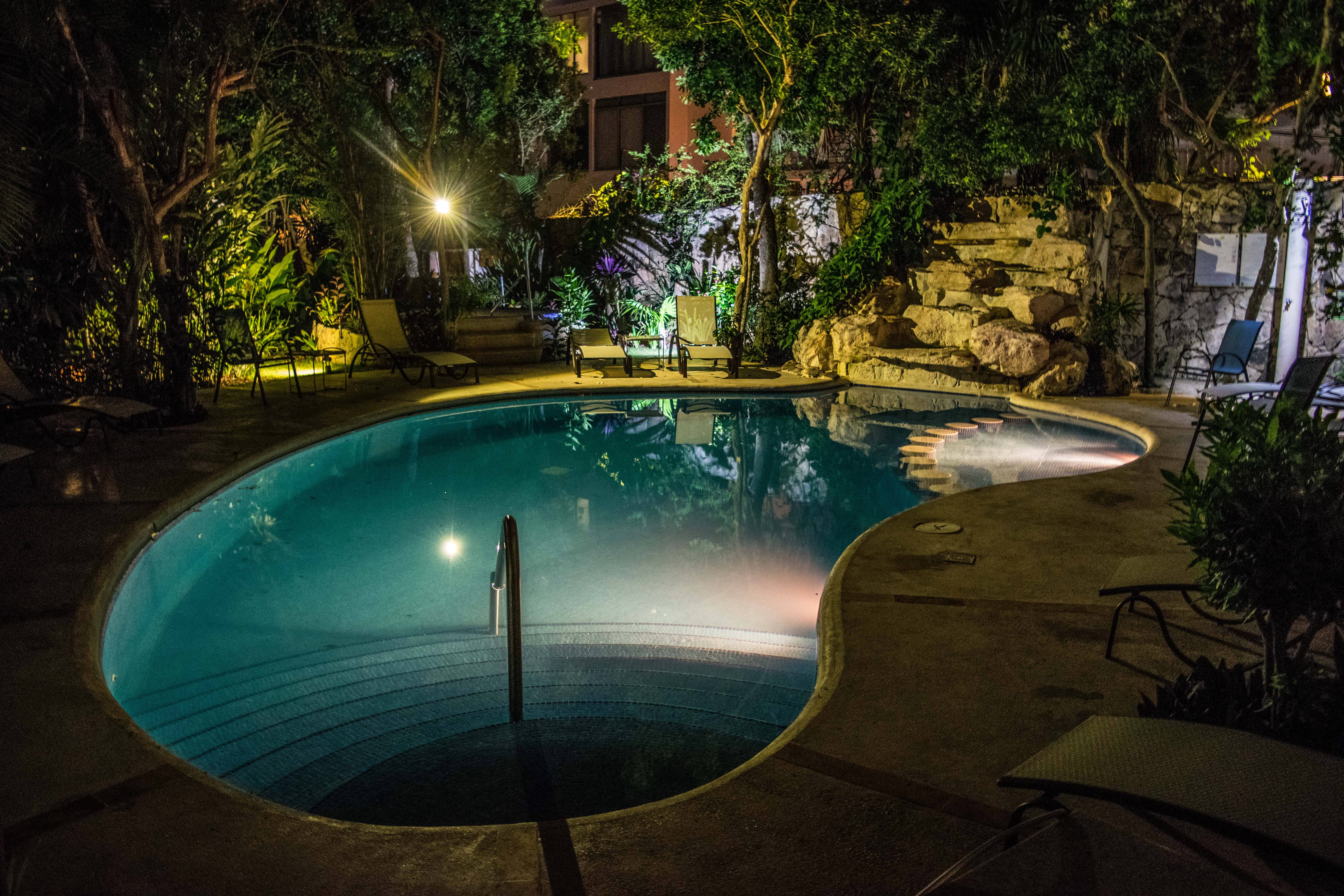
The same goes for taxis. Many is the time they try to tell tourists the price is double or triple the actual rate, and it’s only if you reply in Spanish that they realize you’re not a green tourist but a seasoned veteran or local resident. Bus drivers will do the same thing; the Hotel Zone buses only cost 10.5 pesos to ride into Centro, but they tell all the tourists “one dollar”, which is actually anywhere from 18 to 20 pesos, depending on the exchange rate. Every day, all day, they are pocketing that extra change because many tourists don’t know any better (though some do and don’t mind as they look at is as a “vacation tip”, and many people bring extra cash just for that purpose.
An example of the bad side of this of this is an American family getting on a bus in the Hotel Zone. Mom, dad, two kids. They handed the bus driver four tickets from a prior bus, not realizing that the tickets which are sold per-bus are just that: for each individual bus. They had to explain how the previous bus driver had told them that for 50 USD they could buy bus tickets which would be good for their entire vacation and could be used on any of the other buses throughout their stay. Bad form, on the driver’s part. Believe me, true locals don’t support that kind of crap. It’s usually only those who are coming in from Mexico City or other parts of the country who pull that kind of shit. Yucatecans and Cancunenses only charge the price.
Real estate prices are relatively cheap as well, though they’ve gone up by about 30 percent since I first wrote this article back in June of 2012 (this update is as of May 2017). Three and four-bedroom houses in the older subdivisions back then were averaging around 400,000 to 500,000 pesos; now they are up to 600k+. The same houses along Bonampak or in the newer subdivisions cost you 80-100k USD easily, and you can forget about finding anything in the Hotel Zone for less than 250k unless you get extremely lucky.
Where we live is no different than any resedential area or subdivision you’ll find in the United States; the middle class Mexicans who make up the bulk of Cancun live here. They drive modern cars, they have mortgages and they live life just the way most people in most other developed do; they work 40-60 hour work weeks or more and both spouses are pitching in to help provide a good life for their kids.

On top of all of that, Cancun is a natural starting point for those who want to explore the Mayan culture. Known as the Mayan Heartland that extends from here into Central Mexico, then south into the state of Chiapas, south-east into Guatemala and then north again into Belize, you can visit dozens of ruins within a half-days’ drive from Cancun. Beyond that, you can drive for several day’s in either direction and stumble across Mayan ruins, as well as the Mayan people themselves, very much alive and thriving despite most people assuming they are a dead culture. While they mostly exist as indigenous tribes removed from the city life, their shamanic culture is still at the heart of this part of Mexico, and it’s certainly a part of the city itself once you take the time to experience the city beyond the resorts.
They are not backwards, inbred, uneducated brown-skinned people born to serve the white-skinned, superior American as the manual laborers of the world; they have only garnished that reputation because the average, everyday, privileged American has relegated the Mexican to performing the tasks that they themselves don’t want to get their hands dirty doing, so they allow someone else to do it for them. This has gone on for so many years that the average American has unwittingly become conditioned to view any Mexican as being inferior to them, which is absolutely not the case.
Mexicans are a proud people with a rich and diverse culture. They are a passionate people, with a love of good food, good beer and good tequila. They love their fiestas with a passion I have never come across before. I was told a joke one time that if you sit a Mexican down with a beer and point your finger at something they will come up with a reason why there should be a festival day for that particular person, place or thing. Day of the fire hydrant. Day of the taco. Day of the fireman. Day of the dog print in cement. So on and so forth.
Cancun is a city full of opportunity. It is still relatively new and construction is continually ongoing, not only here but up and down the Riviera Maya. High-rises and condos are going up all along the coastline, and there are numerous eco-reserves as well, ensuring that some parts of the jungle and the cenotes are preserved even as the development continues. Modern amenities abound, the hospitals here are top-of-the-line, medical services are dirt cheap (they have a universal healthcare system that only costs a few hundred a year for unlimited prescription medication and free doctor visits, on top of a private system as well) and every creature comfort you’ve ever had or wanted exists.
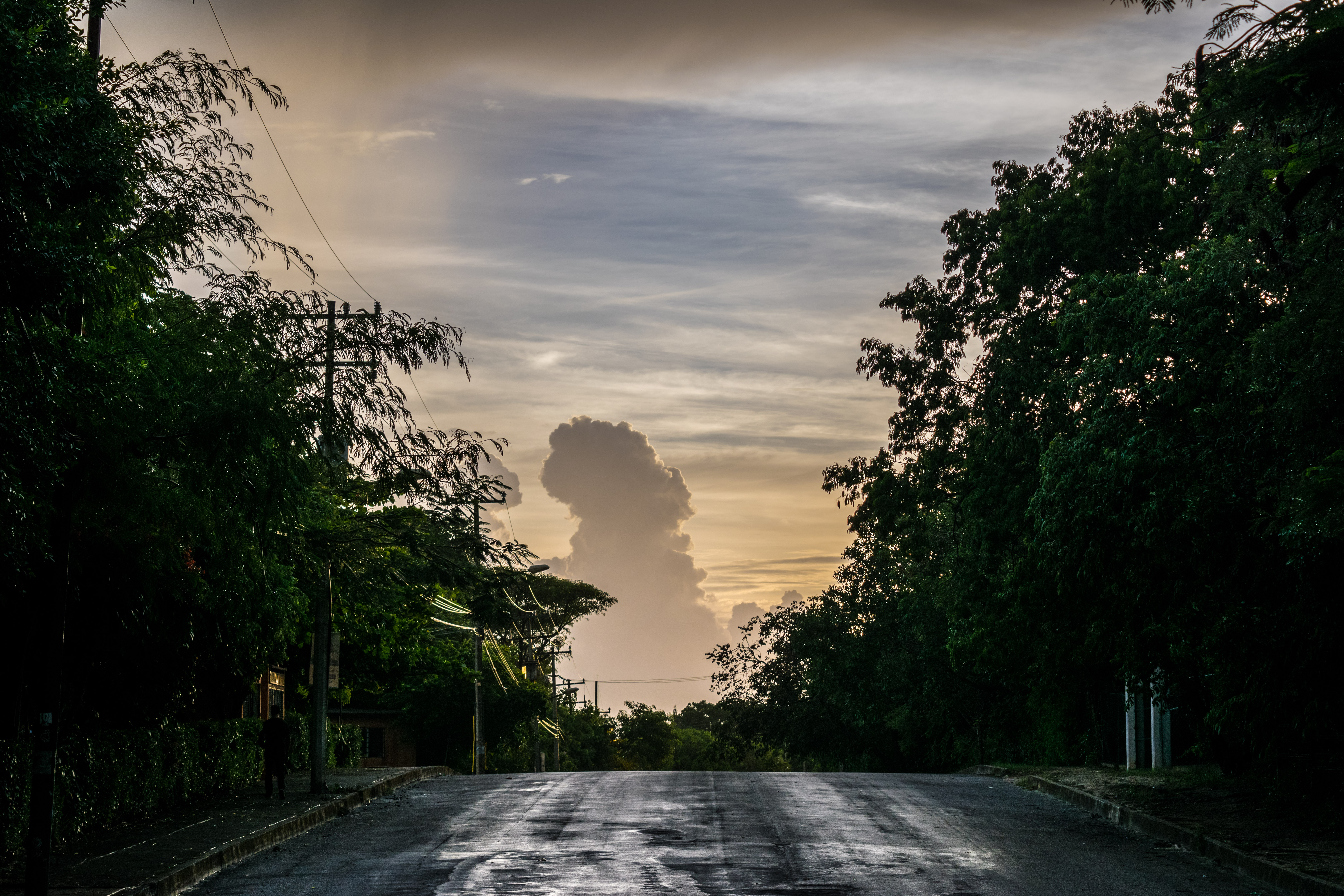
There is a reason this is called the “land of tomorrow”, and it’s not simply because no one pays attention to the time. It’s because they realize, as a culture, that it’s not worth stressing about five years into the future when all you really need to be worrying about is what you are doing today and what you are doing tomorrow. Calmate. Drink your beer, enjoy your tequila and relax in the shade of a palm tree while the ocean laps up over your feet. You don’t know what tomorrow will bring. Pass the joint. Enjoy a little swim in a fresh-water cenote. Relajate. It’s Mexico, man. Stop stressing and just enjoy life. There’s plenty of sun, sand, cenotes, tequila, ceviche and cervezas for everyone, 365 days a year.

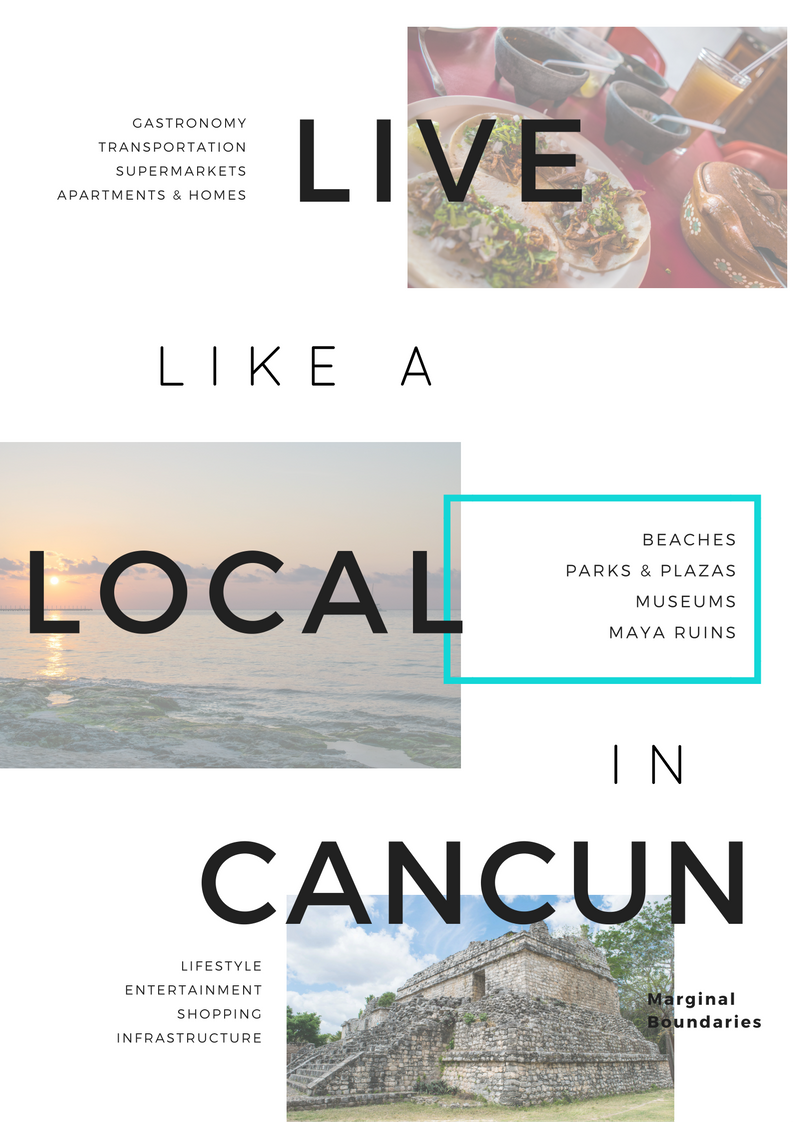

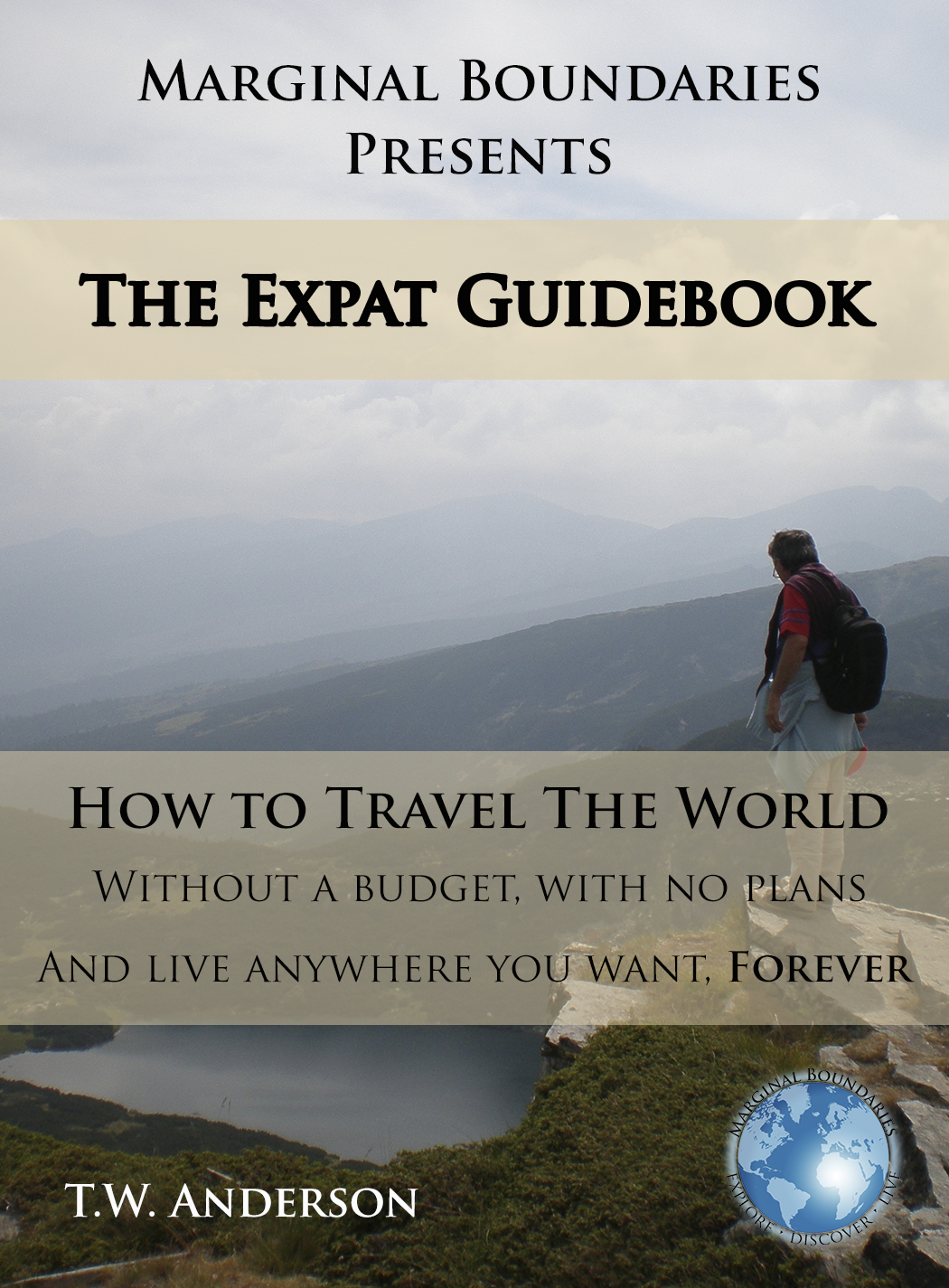



Thanks for the information on Cancun, but I have to take exception to the American supremist attitude. My husband and I are Canadians staying in the hotel zone and we have talked to people from all over the world who are visiting here. I worked in hospitality for over 10 years and respect the locals who work so hard to make our stay pleasant. We tip, especially the housekeeping staff who have one of hardest jobs out there, followed by the serving staff. We try to use our limited Spanish as much as we can. Sometimes people travel to these places because it’s easy, when the rest of their lives are busy and they just need a rest. My point; please don’t paint us all with the same brush, some of us do treat these hard working people with the respect they deserve.
Hola, Stephanie.
Indeed, it takes more than just skim-reading a destination to uncover the greater mysteries That’s why I am a fan of immersion travel…I get to read the whole book from cover to cover and seep myself in all the juicy details in between!
That’s why I am a fan of immersion travel…I get to read the whole book from cover to cover and seep myself in all the juicy details in between!
Unfortunately, the only side I have seen of Cancun is the ” stuff-your-face-and-drink-till-you-pass-out paradise of all-inclusive resorts.” Most people never see the “real” Cancun.
(Fixed the spelling error that you mentioned, btw).
Thanks, Bill I’ll take you up on it, for sure! My gf has been asking me if I want to take a road trip to Merida for a few months now, and I think as soon as she gets some time off we’ll be heading that way for a weekend trip or something.
I’ll take you up on it, for sure! My gf has been asking me if I want to take a road trip to Merida for a few months now, and I think as soon as she gets some time off we’ll be heading that way for a weekend trip or something.
BTW, loved the article on your site about Yucatecans and the “too cold” syndrome and sweaters/etc. While my SO is from Chiapas/Tabasco, she has the same syndrome…any time we are at the movie theater or in the grocery store she is bundled up in a sweater + scarf shivering while I’m in shorts + t-shirt and feeling just right, lol! Will be sharing that gem next week in our rotation @ the Facebook page.
Cheers!
True, most of Cancun’s tourists fall into the “ugly American” or at least the “ignorant American” category. And I agree that people that want a more authentic Mexican experience avoid Cancun like the plague. But I can’t agree with you on the so-called entrepreneurial spirit of anyone ripping off someone who is visiting their country, whether it be Cancun, New York or Vancouver. When someone comes to your home, you treat them well; if they are rude and less than gracious, chalk it up to experience but don’t take it out on others. You don’t get down to their level – it just begets more distrust and feeds into stereotypes.
BTW, I am next door to you – in Merida – and have lived down here for over 25 years and know where you’re coming from but still. If you come over this way, let me now and I’ll buy you a beer and we’ll chat.
Thanks for the comment, Bill.
You are right in that they are not ALL entitled gringos, but the unfortunate reality is that the vast majority of tourists coming to Cancun are of this variety. Thus the reputation Cancun has as an “Americanized” resort that most of the people in my own line of work (travel blogging/professional traveling) avoid this city like the plague so they don’t have to deal with the typical American.
And, consequently, being someone who has many Mexican friends working in the Hotel Zone, this is the actual reality…most of the gringos who come here as tourists are the entitled, white, “Mexicans are a slave race” type of U.S. traveler.
But Cancun is *SO* much more than just the Hotel Zone, thankfully, which is the purpose of this article: to show people the reality of living here, and that it’s not just the endless parade of facades that are put on in the HZ.
As far as the bus driver goes…there’s two ways to look at it. I take the view that it’s the fault of the tourist for not educating themselves. The information *is* available. Heck, you could even ask at the front desk of your hotel where you know the staff speak English if you don’t know Spanish and cannot thus ask someone on the street. “Hey, how much does a ticket really cost?”
In my mind, the bus driver isn’t corrupt, nor is he giving the rest of Mexicans a bad name any more than taxi drivers in New York City give Americans a bad name or cabbies in London give Brits a bad name. He’s merely taking advantage of the ignorance of someone else. Somewhat sceezy, perhaps, but then again…the ignorant tourists should have educated themselves in the first place. He’s doing what bus drivers and taxi drivers do in EVERY single city on the planet; take advantage of ignorant tourists.
You can go to *any* city on the planet….New York City, London, Dubai, San Diego, Denver, Vancouver, Rome….and there will be taxi drivers/bus drivers taking advantage of ignorant tourists and first-time newbies who lack the basic common sense to ask a simple question of the locals. “How much are bus tickets/cab fares?”
I like what you’re doing but you really go overboard with the whole “entitled gringo” theme. They are not all like that.
Also, a bus driver selling a family a set of tickets for 50 bucks and telling him they are good for the day is not an “intelligent entrepreneur” – he is taking advantage of the fact that there is no information available for this family and at the same time, making every other hardworking, decent and honest Mexican look bad as well.
Thanks, Micki.
It’s unfortunate that most people only know Cancun’s Hotel Zone and the associated touristy facade, because it keeps people from really uncovering the city beneath. That being said, Playa tends to get more of the European crowd, while Cancun’s HZ caters to Americans mostly because it’s always had such close ties to the U.S. government and is promoted back there as one of Mexico’s premier beach destinations.
But yes…there is an entire city here beneath the surface, one that has absolutely nothing to do with the rich, white, over-privileged “Mexicans are nothing but a dirty, brown-skinned slave race” type of U.S. tourist…it just takes a little bit of digging to get to know
As usual, great info here, T.W. We spent a few months in Playa del Carmen last year, but I’m sad to say that the touristy stereotype kept us out of Cancun. And we should know better! Thanks for the look at Cancun though the eyes of a local.
Hola, Cole.
LOL I did that in London in 1999. Was my very first trip out of the States, I was 19, I could drink legally in England, and I spent about half of my time in clubs and raves (saw Fatboy Slim at the height of his fame) drunk off my arse…had to go back several more times to explore the “real” London
Mexico is a pretty amazing place, and I’m glad I’ve taken the time to peel back the upper layer. That being said, it’s about time to move on to the next destination, but I do plan on keeping the aforementioned semi-permanent roots here.
Great food, great people, and *much* more beyond the all-inclusive resorts/clubs.
And yeah…immersion travel is the way to go in my mind Love it, live it!
Love it, live it!
Very good post mate. Ashamed to admit I have visited Cabo once when I was 20 to party it up at Spring Break. Hated that we spent the entire time in clubs and on the beach and didn’t experience proper Mexico. Well to be honest it was amazing and fun when I was that age But would love to live “off-the-grid” like yourself.
But would love to live “off-the-grid” like yourself.
Absolutely, Brock. And they are just a handful =P There are so many reasons I’ve been here for two years…I can’t list them all in a single post or even a single guidebook That’s why I have to keep adding more content to the guide every few months because I’m always finding out more and more things in the Riviera Maya
That’s why I have to keep adding more content to the guide every few months because I’m always finding out more and more things in the Riviera Maya 
SOOOO much more here than the all-inclusive resorts.
Thanks for the comment!
These are some great reasons for getting out of the Hotel Zone in Cancun
Indeed….it’s a great place to live. But unfortunately, yes, the American supremist attitude is still very much alive in the vast majority of the visitors who come here from the U.S. And it takes a *lot* of hard work to break past the barriers the Mexicans have built up in regards to their reactive view of the “typical gringo”.
But once you do, they are an incredibly loving, warm, passionate and amazing people…and Cancun is a great place to live. As long as you are willing to put the time in to respect their culture and speak their language and give as much as you expect to get in return….it’s an amazing place to live. I have no doubts your friend is enjoying Mexico City. I have a few friends who absolutely love it there as well
This is great information, T.W. While reading the article, I must say, I am not surprised. It’s sad that the supremist tourist attitude still exists in Cancun. I hate that the media in America still misrepresents Mexico and completely disregards their culture. I have a friend that is living in Mexico City, and she is loving everything about it and never complains about it’s so-called ‘dangers’. It’s a beautiful country and people should take time to fully admire it inside and out.
I’ve found more here than I ever thought I would, hence my 2 year stay and plans to set up a property here later this year/sometime next year. Definitely putting down some type of semi-permanent roots. I love it here
Fascinating stuff! My partner, Mary, is set to inherit a condo in Mexico at some point, so we’ve considered moving there in the future. Will definitely file this story away for future reference.